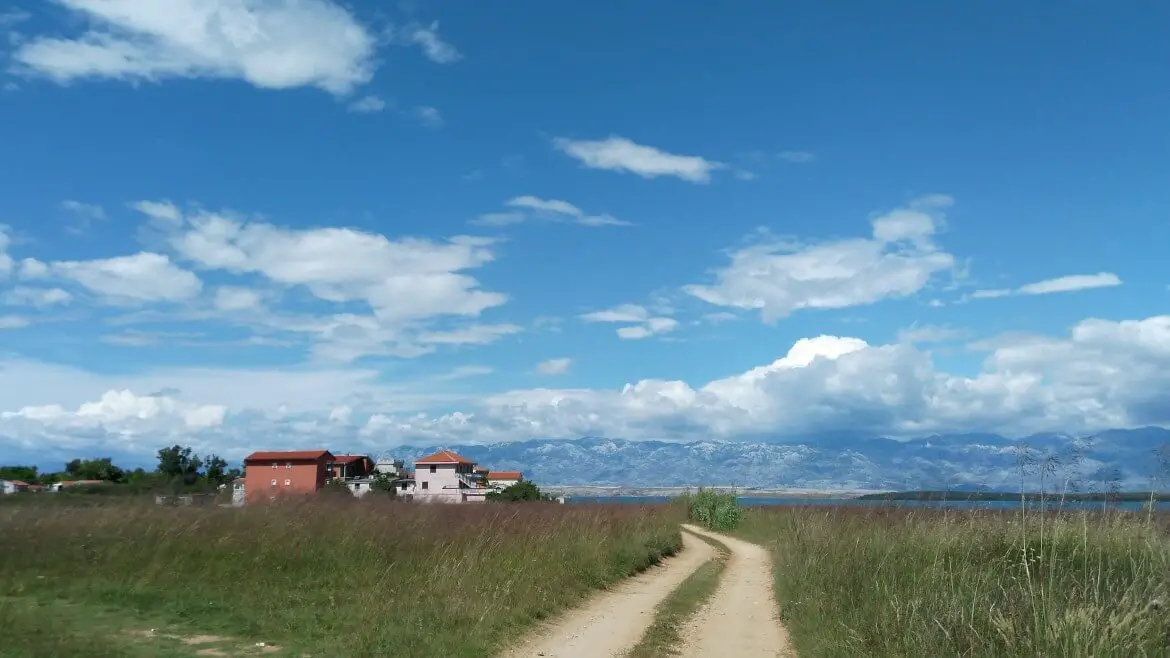
We should have spent the day at Plitvice Lakes, but it was raining cats and dogs and we decided to switch the days and go to Nin and Zadar first. We didn’t even hope that we would have a better weather over the mountains, but we did. It was sunny, warm and lovely, not even a remote cloud. This was the day we fell in love with Nin, a town full of history, nice houses, paved streets, flowers and some of the not so many sandy beaches in Croatia.
Here are the reasons why I fell in love with Nin.
1. It’s easy to get in Nin
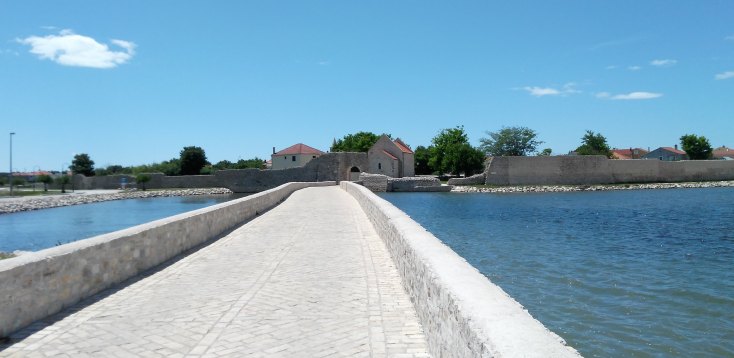
The small town of Nin is located in a shallow lagoon about 14 km away from the regional center Zadar. This makes it perfect for a great day trip. The old center is on a 500 m broad islet linked with the mainland by two stone bridges from the 16th century, which makes it very easy to walk through it.
2. 3000 years old city of Nin
The town on the islet began to develop 3000 years ago and is one of the oldest on the eastern Adriatic.
Since the 9th century B.C., this was one of the main settlements of the Liburnians until the arrival of the Roman conquerors, who forged here a strong harbor called Aenona. The Croats colonized Nin at the beginning of the 7th century and it became the first Croatian royal town. Its period of glory lasted until the 13th centuries. In the 9th century, Nin became the seat of the Croatian bishops. It is a city-church complex, unique in the entire Mediteranean region. Small, isolated “places of worship” are witnesses of the oldest Croatian culture from the 9th and 12th centuries.
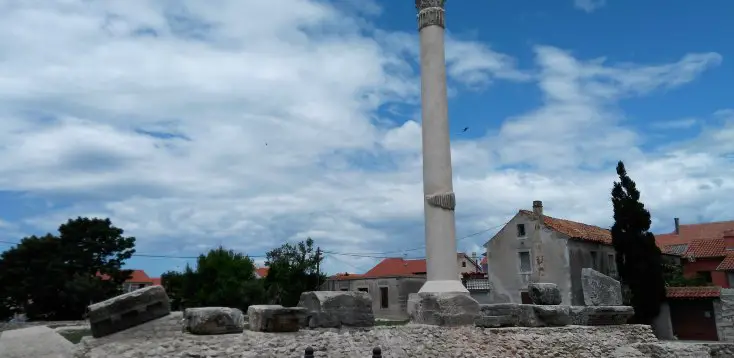
In the 15th century, when Dalmatia was sold to the Republic of Venice, Nin came under its control. Unprotected during the Turkish wars, the town was destroyed two times (in 1571 and in 1646). It is said that Nin was burnt and left by Venice to the Turks in order to save Zadar. After the World War II, Nin started to develop as a tourist destination.
3. Beautiful architecture in the old town of Nin
Arriving in Nin , at the field Prahulje, on the left side, you can see the coronation church of Saint Nicholas from the 12th century, which is built on a prehistoric mound. According to the people tradition, seven kings were crowned in Nin. On the occasion, the new ruler would ride to the church where he introduced himself to the people and made a sign with the sword to the four sides of the world.
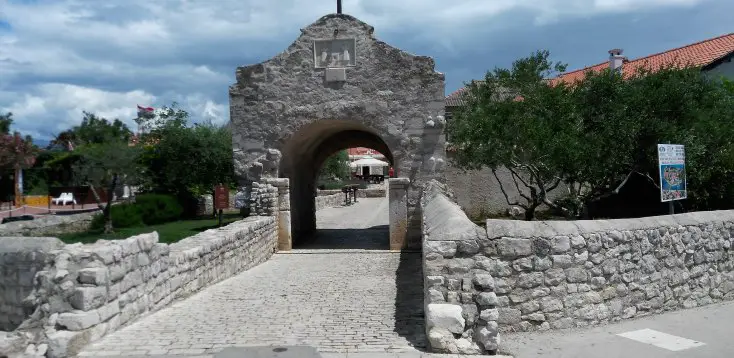
You can enter the little town by crossing one of the two old bridges. At the entrance from the new town, the statue of Prince Branimir will welcome you. Next to the bridge you will see the ancient Croatian ship from the 11th century “Condura Croatia”. You can either go through one of the historical main gates or walk around the city walls of Nin. If you enter the historical town, you’ll get into the main street, Kalelarga.
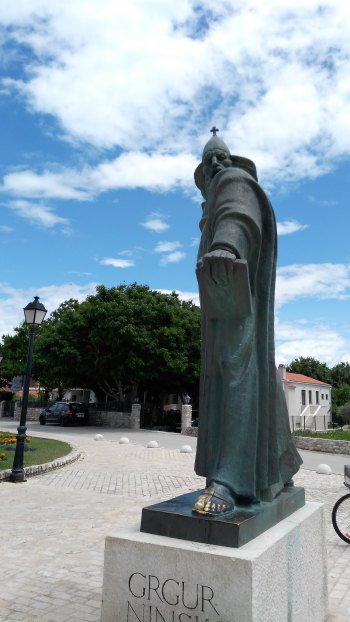
In the middle of the islet you’ll find the statue of Bishop Gregory of Nin. He opposed the Pope in the 10th century and introduced the Slavic language in the churches. By belief of the people, touching his toe makes wishes come true. You will see that his toe is very well polished, just as the ones of his other statues in Split and Varaždin. Walking through Nin, you’ll also find the remains of the largest Roman temple on the Adriatic coast and a roman floor mosaic from the 2nd century featuring animals, plants and geometrical decorations.
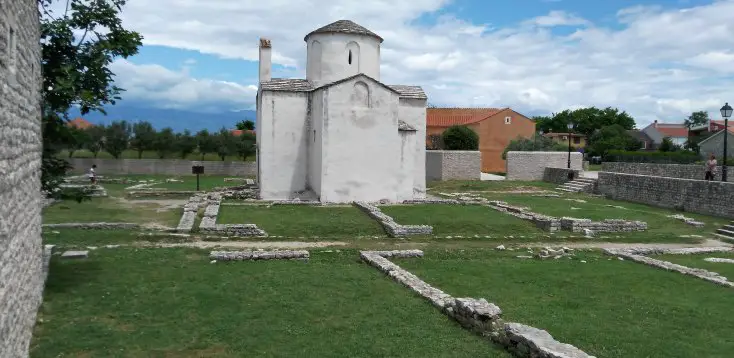
Another symbol of the town is the church of Holy Cross from the 9th century, called “the smallest cathedral in the world”. It was constructed in such a way, that light fills it each equinox and solstice. If you want to find more about the history of Nin, you can also visit the Museum of Nin’s Antiquities.
But the most beautiful is, in my opinion, the town itself, with its cobblestone streets, centuries old buildings, ruins and mediteranean houses. The new town also deserves a little of your time.
4. The wild beauty of Queen’s Beach
Long stretches of sandy beaches are rare in Croatia. In this area, you can find several at Zaton, Privlaka and of course, Queen’s Beach, the most beautiful of them.
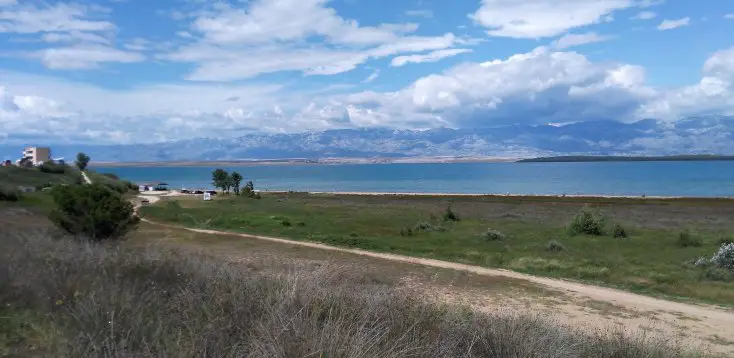
Even the way to this beach is special. It is delimited by a steep hill covered with tall wild grass. On our way to the beach we met some people coming back on bicycles. I think this is the nicest way to get to this wild beach, especially because it is remote and there is no risk of being stolen. If you choose to go by car, there is a parking place next to the beach. The sea is very shallow in this bay making it perfect for families. Walking on the beautiful and unique sandy beach you will have a magnificent view on the Velebit. On the hill, there is also a bar where you can enjoy a coffee. The prices are relatively low and the view is wonderful.
It is said that the first Croatian king, Tomislav, used to come often in Nin with his family to find God’s peace. During their stays here, the queen always went to this sandy beach. The court ladies recommended her to put on medical mud because after that the skin would look beautiful. This beach was, for the queen, the most favorable of all the beaches in the country. One day, the king went with her and they spent there a wonderful afternoon. He told then to his wife: “this place will be only yours when we come to Nin. Here I will be with you at least one afternoon. This is paradise on earth and this is your beach”. The people who were with the queen have called it queen’s beach since then and it was reserved just for the queen when she was there.
5. The peloid in Nin’s Lagoon
The peloid is located in the centre of Nin’s Lagoon, close to Queen’s Beach. The place is located in a natural oasis of shallow, long and sandy coasts, far from industrial zones and isolated from direct traffic and main road routes. The medicinal mud here has been used for curative purposes since the Roman times. Today, Nin is the biggest site of medicinal mud in Croatia. People come here for treatment in July and August and, occasionally, in June and September. Fresh and high quality mud is extracted from the natural environment and applied on the body. Then, in a pleasant natural ambient in the open, you can sunbath on a sandy beach for about 30 minutes, until the mud on a body dries. In the end the mud is rinsed. All this is followed by swimming in the warm sea that prolongs the therapy.
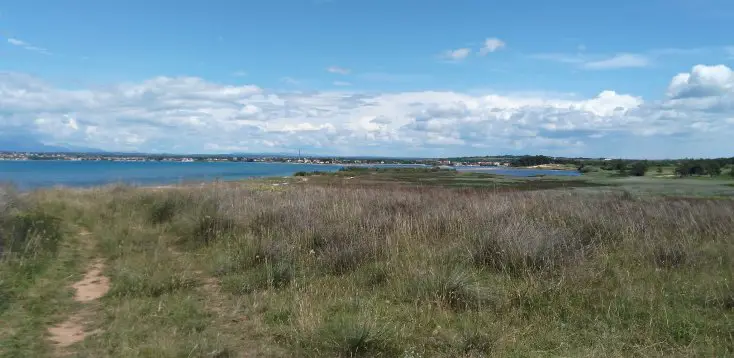
It treats various rheumatic illnesses, spine deformations, female infertility, cellulite and skin problems. Besides its positive effects on your health, you can take some funny photos that everyone involved will remember for a long time.
6. The kites
The kite is without any doubt one of the greatest memories of childhood. Any child loves them and wishes to lift them up, where he cannot reach. If you have children and want to make them happy or you just want to remember your childhood, this is the perfect place to lift one or watch others doing it.
7. The flowers and birds
In the Nin’s Lagoon, bird watchers will have the pleasure of watching rare species like the endemic bird called vlastelica. Birds choose this area because vegetation of halophilous scrubs provides optimal conditions for bird types living in marshes. Specialists have also discovered here several rare and endemic halophile plants.
Besides these, in Nin there are flowers everywhere. It’s colorful. Almost anywhere you walk you smell them in the hot air. For animal lovers, the cats here are friendly and like to be pampered.
8. The Sokol from Nin
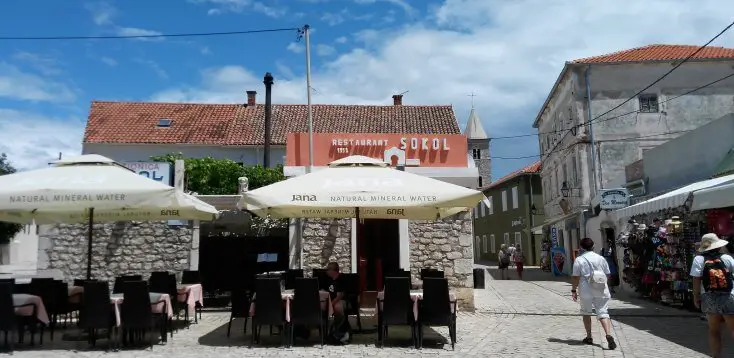
Only in this region you can taste Ninski Sokol, an authentic gastronomical product of Nin. It has been produced in this region since ancient times. After the town was destroyed in 1646, its inhabitants were resettled and soon after, peasants settled the area of Nin. They raised pigs on their small family properties and produced Sokol and prosciutto ham.
Sokol is a dry-cured meat product made of pork meat neck. The meat is kept in sea salt for at least three days, put into cooked red wine with various spices, smoked for a few days and dried by the northern wind called “bura”. People of Nin say that this natural phenomenon of Bura is the most important moment for drying sokol. With the development of tourism after the 70s, the people left pig breeding in the urban parts of the town, but did not stop to make sokol. Now they buy the necessary meat from domestic breeding and go in keeping their family tradition. In each family, the original recipe is kept only by word of mouth. You can find it as a crucial part of the menu of any restaurant.
9. The Fabulous Nin weather
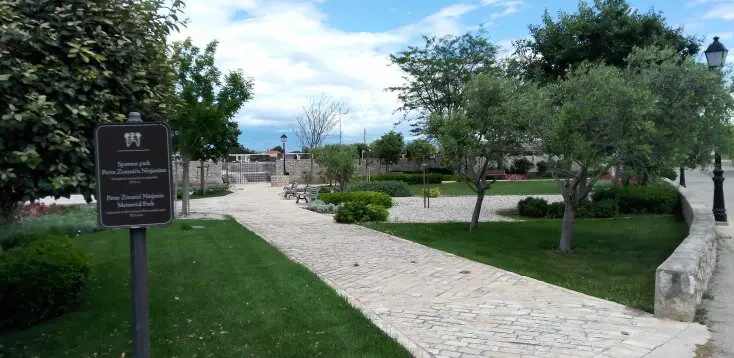
The temperatures here are almost all the time over 0°C. The coldest month is January, but even then the average is around 10°C. The highest temperatures are in July and August, around 30°C. The climate is mild, maybe not ideal for a bath in winter, but definitely nice enough for a walk. Even when it is raining in the mountains and in the central part of the country, here you still have a big chance to have a beautiful weather, just as we had.
10. The Salt Museum
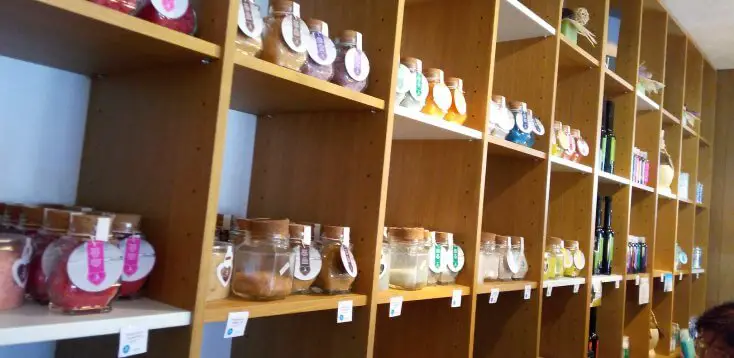
At the Nin Salt Works salt has been produced traditionally for 1500 years. Nin salt accumulates at the bottom of the salt pan and the flower of salt remains at the surface, like a fine crystal of sea salt. It is gently picked by hand and with wooden micron sieves shaped like flower petals. Apart from sodium chloride, Flower of Salt Nin is rich in calcium and magnesium sulphate, which is not present in the rock salt.
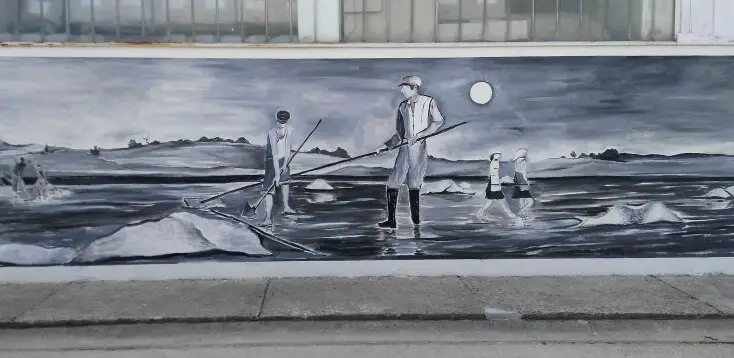
The salt from Nin is suitable for everyday use both nutritionally and medicinally, with benefits for the thyroid gland. You can also use it to create your own toothpaste or mouthwash or buy one from the souvenirs shop. The shop acts also as a museum and it contains several pictures from the salt extraction. If you are part of a group, you can also get a free guided tour of the salt pans. In the same shop you will also find testers with sea salt with any flavor possible.
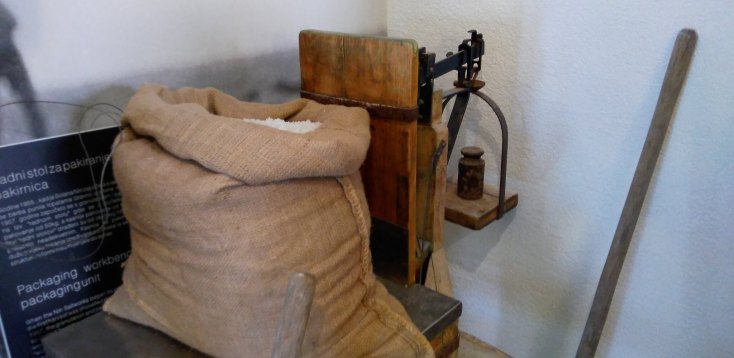
Nin has a little for everybody: history, spa, museums, good food, cafes, beautiful landscapes, sandy beaches, flowers over flowers and quirky shops. I don’t know how many reasons you need to visit a new place, but I think one of these or even one photo could be enough for you to visit Nin. I know for sure that I do have at least 10 reasons to come back to Nin. And besides all this, very close to Nin, at about only 15 km, there is the donkey farm that I liked so much and I would revisit anytime.
We used Airbnb and Booking in order to find accommodation for our road trip. You can get a 40$ discount on your first room by using the link below. You can even find some properties in Nin.
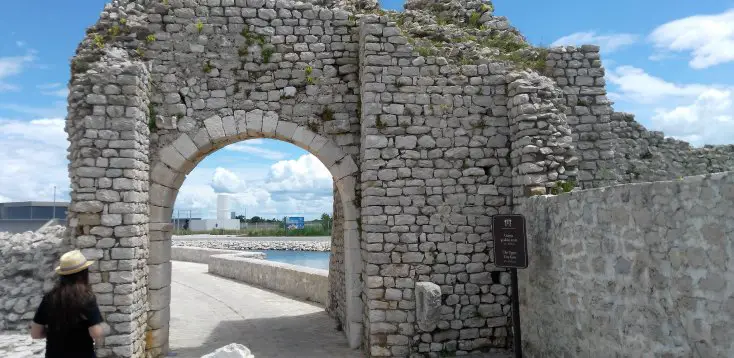
What would make you want to visit a destination?
Pin this article to read it later!
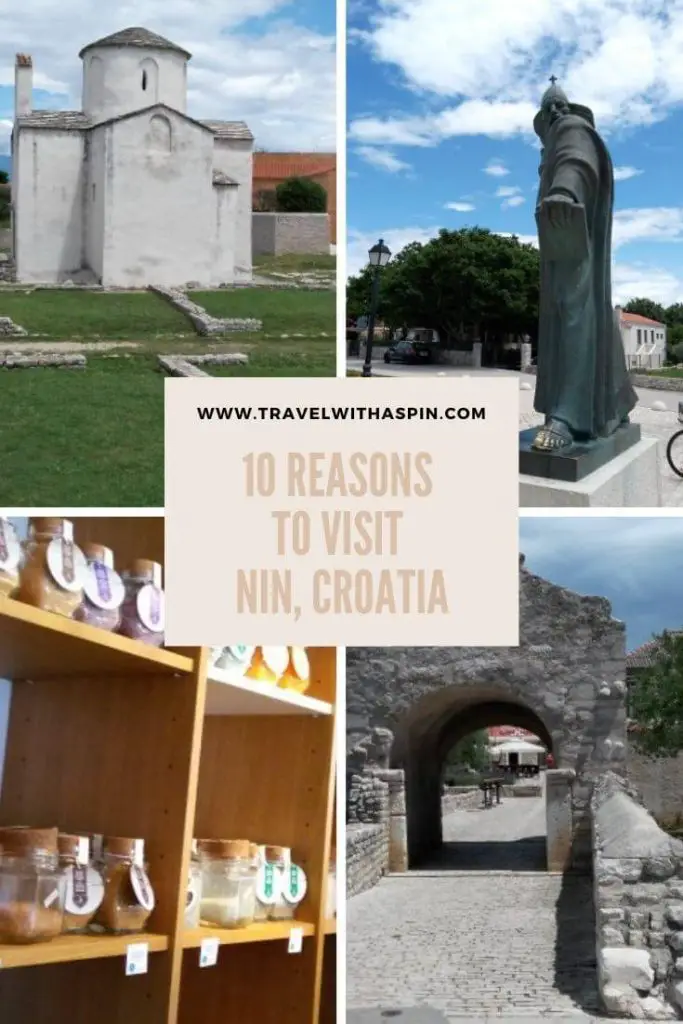
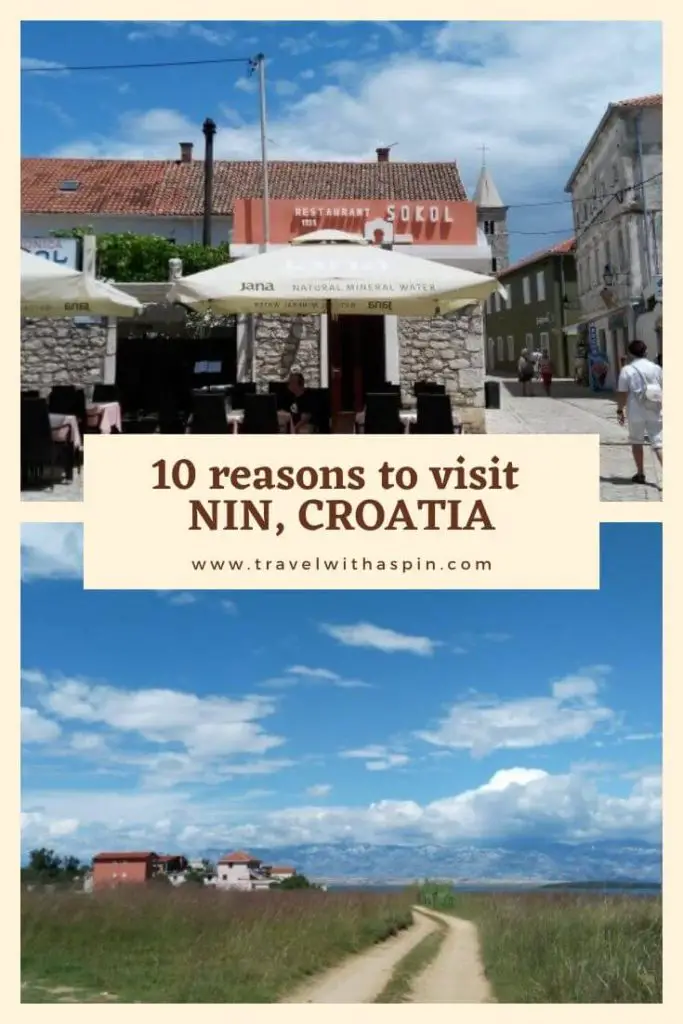
Travel With A Spin contains affiliate links. If you make a purchase through these links, I will earn a commission at no extra cost to you. Thanks for reading!
